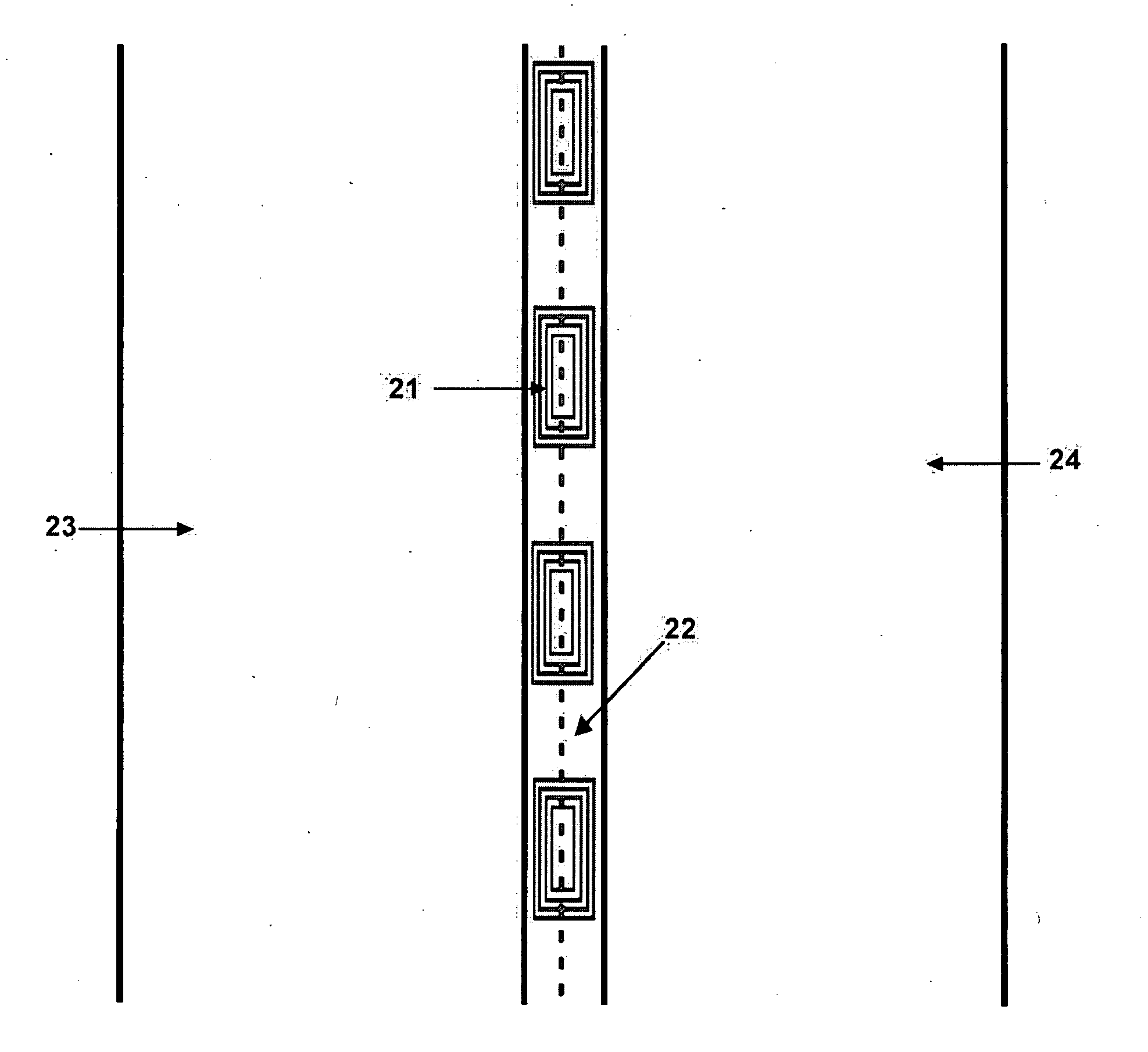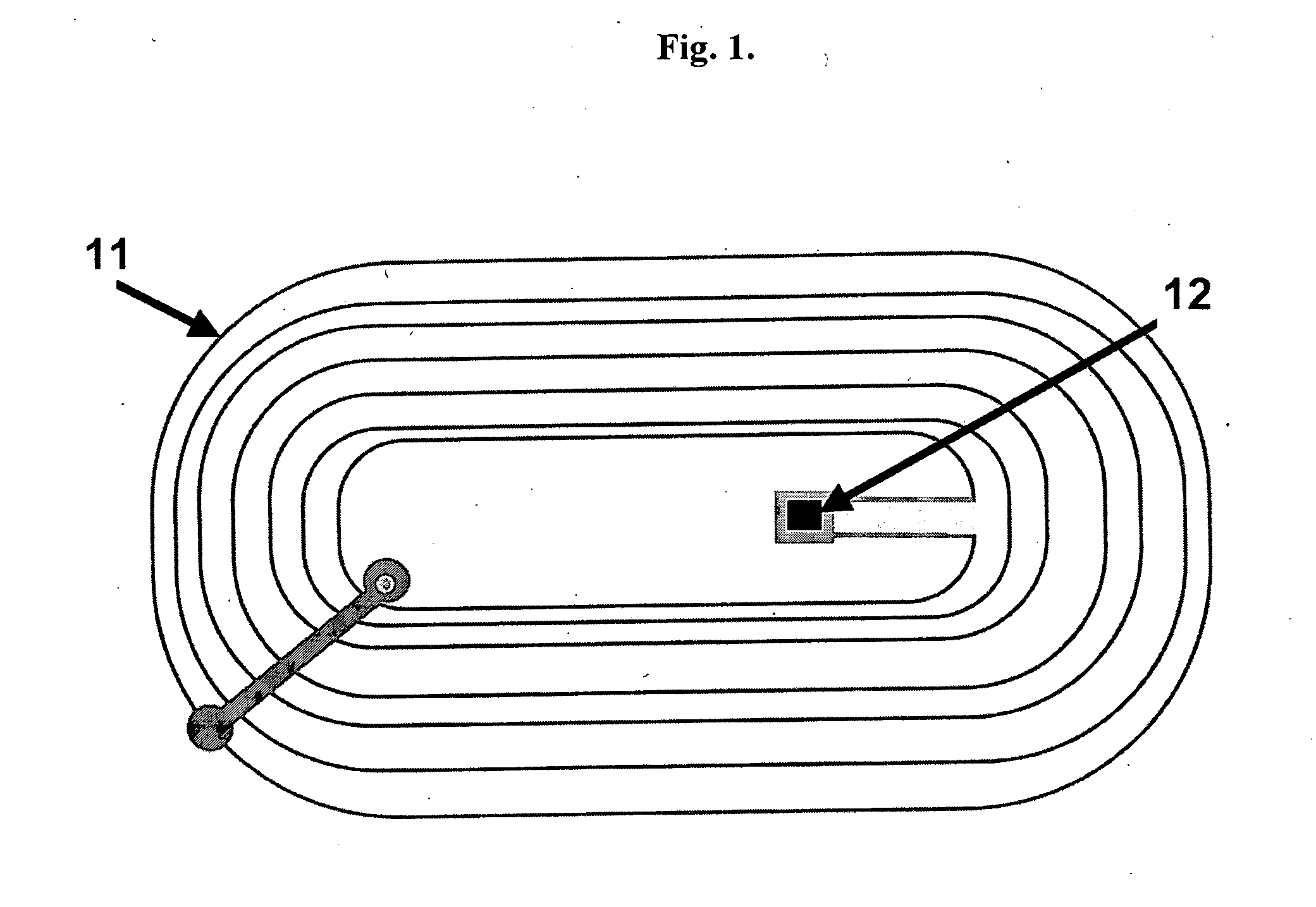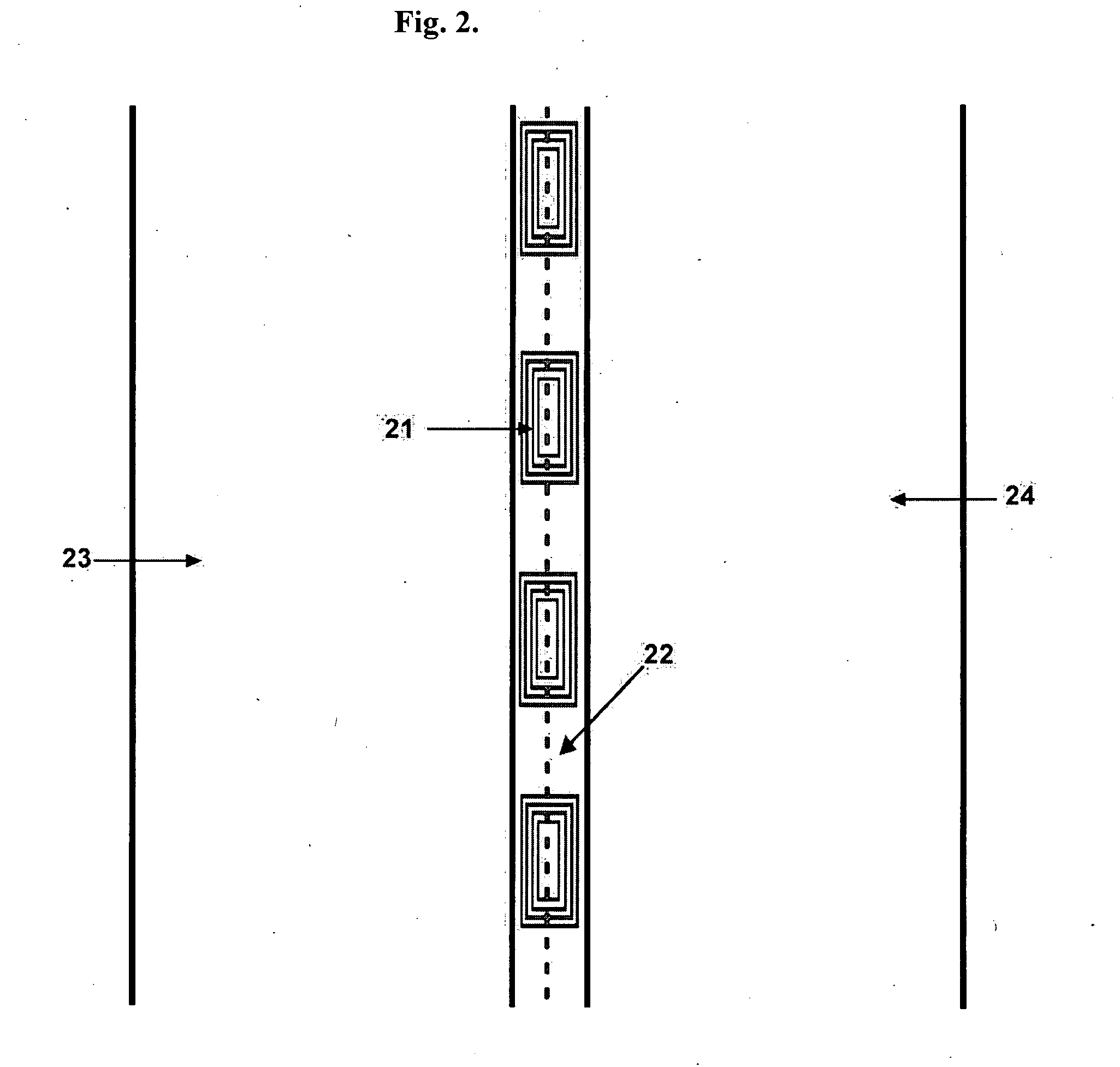Tracking lane marker position through use of information-transmiting device
- Summary
- Abstract
- Description
- Claims
- Application Information
AI Technical Summary
Benefits of technology
Problems solved by technology
Method used
Image
Examples
Embodiment Construction
[0027]Embodiments of the present invention enable detection of the position of vehicles using information-transmitting devices installed on a road in certain order with respect to the road marking. One example of this kind of devices is RFID tags.
[0028]The tags may be placed in proximity or just directly on the marking line which they suppose to detect when the vehicle is either approaching or crossing such a line. Such a tag may be installed individually in which case it has been presented most often as a polymer label-like base with a tag on it. The simple way to attach this label to the road surface is just to spray an adhesive to one side of the label and apply the label with an adhesive side to the road surface.
[0029]As another alternative the RFID tags may be attached to the tape with an adhesive surface and applied to the road by rolling out the tape roll down the road. There is a variety of applicators of all kinds in industry which are performing this simple operation. The ...
PUM
 Login to View More
Login to View More Abstract
Description
Claims
Application Information
 Login to View More
Login to View More - Generate Ideas
- Intellectual Property
- Life Sciences
- Materials
- Tech Scout
- Unparalleled Data Quality
- Higher Quality Content
- 60% Fewer Hallucinations
Browse by: Latest US Patents, China's latest patents, Technical Efficacy Thesaurus, Application Domain, Technology Topic, Popular Technical Reports.
© 2025 PatSnap. All rights reserved.Legal|Privacy policy|Modern Slavery Act Transparency Statement|Sitemap|About US| Contact US: help@patsnap.com



